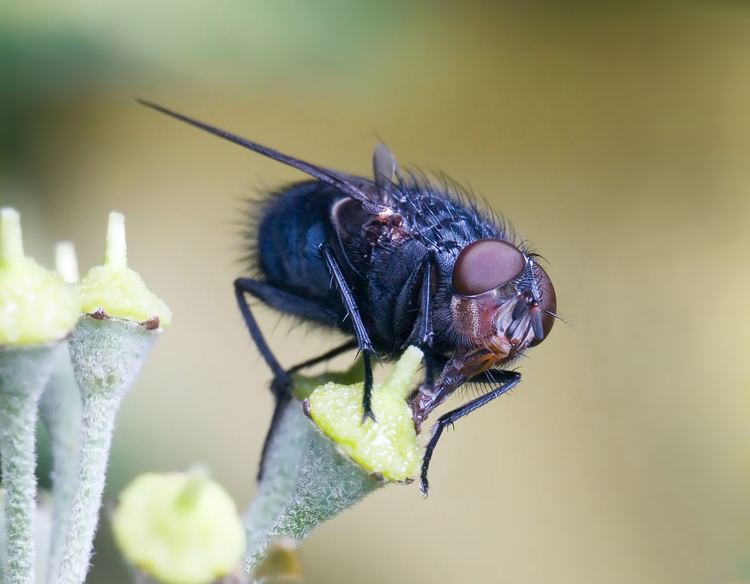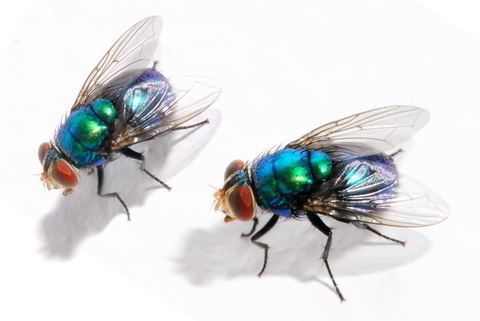Kingdom Animalia Order Diptera Subfamily Calliphorinae Scientific name Calliphora vomitoria Rank Species | Phylum Arthropoda Family Calliphoridae Genus Calliphora Higher classification Calliphora | |
 | ||
Similar Fly, Calliphora, Insect, Blow flies, Calliphora vicina | ||
Blue bottle fly calliphoridae grooming
The bluebottle fly or bottlebee (Calliphora vomitoria) is a common blow fly found in most areas of the world and is the type species for the genus Calliphora. Its larva, used as fishing bait, is called a maggot, while its pupa, also widely used for bait, is called a caster. Similar species include the greenbottle fly, a close relative that can be distinguished by its bright green metallic colouring. Bluebottle fly adults feed on nectar, while the larvae feed on carcasses of dead animals. Adults are also pollinators to some flowers with strong odor.
Contents
- Blue bottle fly calliphoridae grooming
- Praying mantis feeders blue bottle fly care
- Description
- Life cycle
- References

Praying mantis feeders blue bottle fly care
Description

It is 10–14 millimetres (0.4–0.6 in) long, slightly larger than a housefly. The head and thorax are dull gray and the abdomen is bright metallic blue with black markings. Its body and legs are covered with black bristle-like hair. It has short, clubbed antennae and 4 tarsi per leg. The eyes are red and the wings are transparent. The legs and antennae are black and pink. The chest is bright purple and has spikes to protect themselves against other flies. These insects like to fly in packs in order to detect possible prey more efficiently. If one fly detects food, it will disperse a pheromone which will alert the others to the meal.
Life cycle

A female blue bottle fly lays her eggs where she feeds, usually in decaying meat, garbage, or feces. Pale whitish larvae, commonly called maggots, soon hatch from the eggs and immediately begin feeding on the decomposing matter where they were hatched. After a few days of feeding, they are fully grown. At that time they will crawl away to a dry place where they can burrow into soil or similar matter to pupate into tough brown cocoons. After two or three weeks, the adults emerge to mate, beginning the cycle again. During cold weather, pupae and adults can hibernate until higher temperatures revive them.
They are pollinators of some flowers with a strong odor such as skunk cabbage and goldenrod.
